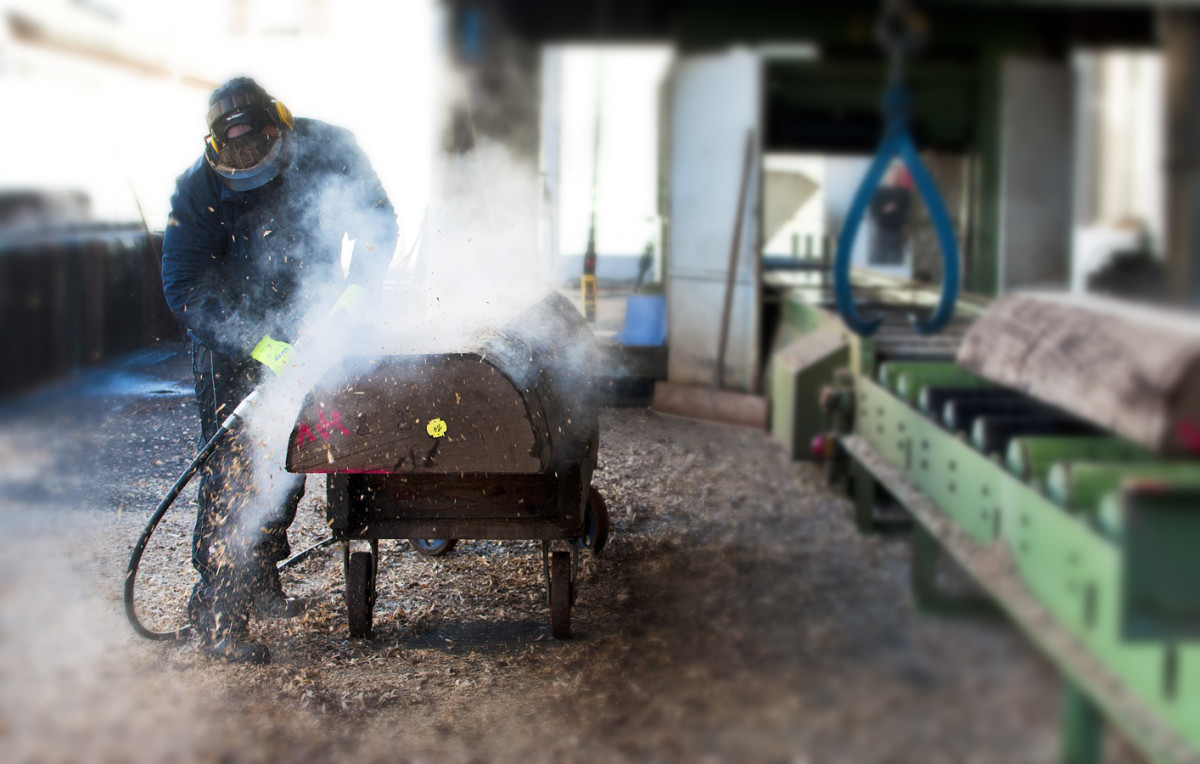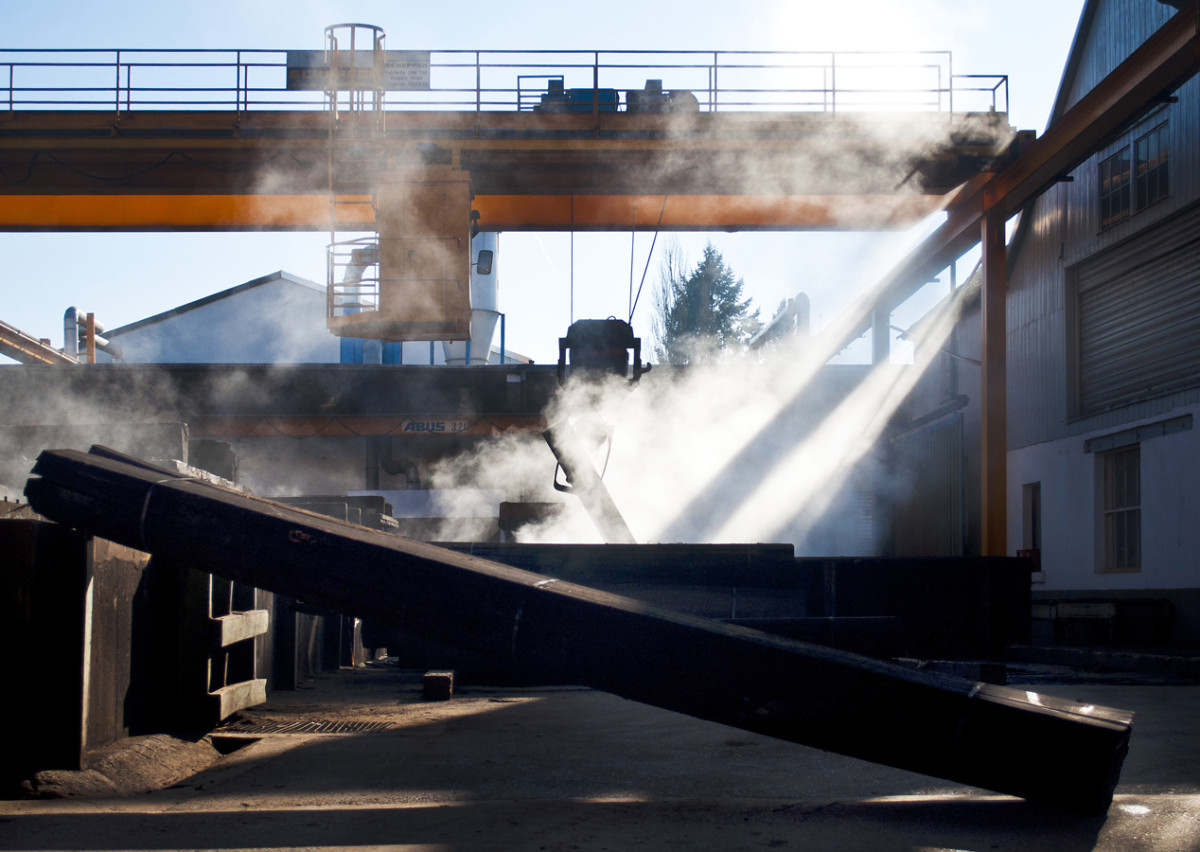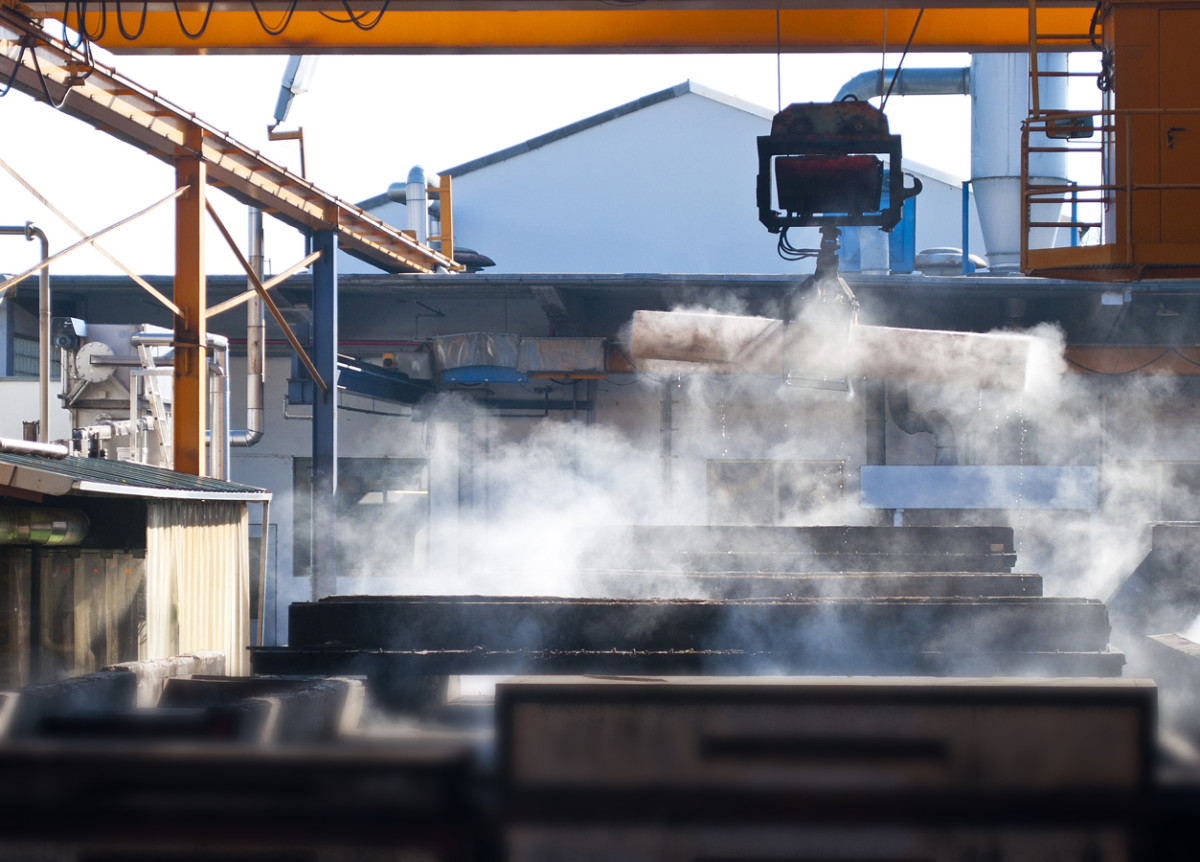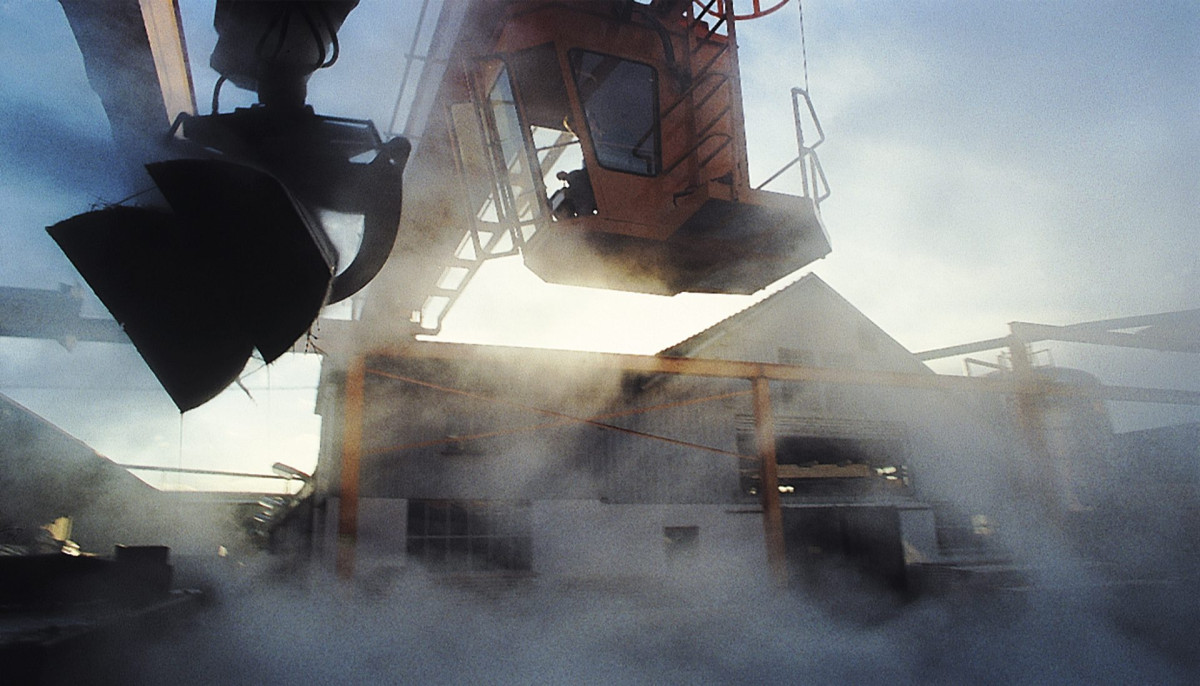After the preparation of the flitches, they are being cooked.
Exceptions are only species such as Sycamore or White Beech for example, where preferably light or (almost) white coloring is desired.
Two effects are achieved by cooking in hot water:
- The wood is given the necessary suppleness to ensure smooth slicing and thus perfect quality in production.
- The color of the produced veneer is influenced by the cooking time. For example, the color of original White Beech is changed by cooking to a pink or salmon-colored hue.
Depending on the species of wood and color demands, cooking periods vary from one day to one week. An individual temperature profile is given for every single species of wood for the respective cooking period. This profile has to be controlled precisely to avoid color defects.
Also the local water quality (hardness, chemical composition) has considerable impact on the course of the cooking operation. That is why individual time and temperature curves have to be empirically calculated for each production site, which need to be met meticulously.
After the cooking process, the actual veneer production can start.






